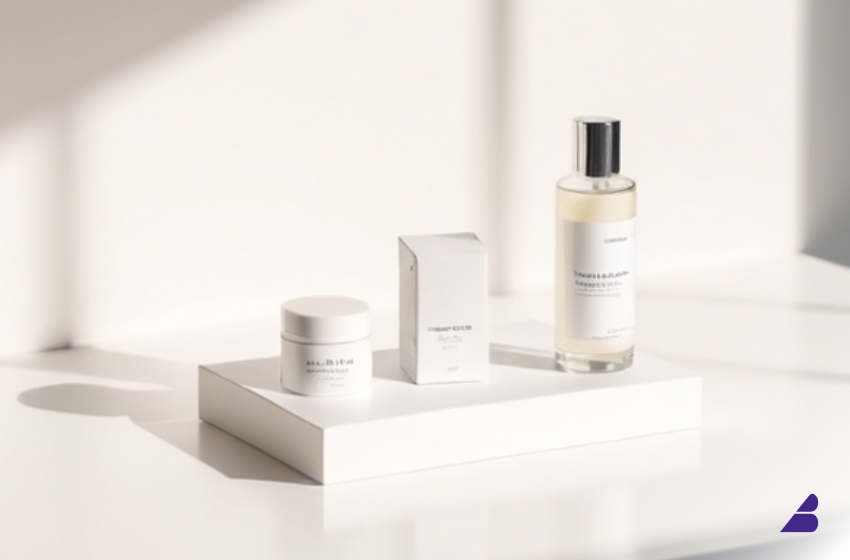
In a world overloaded with advertisements, flashy designs, and overwhelming choices, less is truly becoming more. Minimalist packaging is not just a design trend—it’s a strategic move that brands are adopting to enhance user experience, boost sustainability, and create stronger brand recognition.
From Apple’s sleek boxes to high-end skincare brands ditching excess layers, 2025 is the year minimalist packaging takes center stage. But why is it winning, and should your brand follow the trend?
Let’s dive in.
1. The Power of Simplicity: Why Less is More
Minimalist packaging cuts out the clutter and focuses on essential design elements:
✔ Clean typography
✔ Neutral or muted colors
✔ Simple logos and branding
✔ Eco-friendly materials
✔ Minimal text and visuals
💡 Example: Ever noticed how luxury brands like Chanel and Aesop use plain, bold text on simple packaging? This creates an aura of exclusivity and confidence.
The message is clear: “Our product speaks for itself.”
2. Sustainability: A Key Driver of Minimalist Packaging
Consumers in 2025 demand sustainability, and minimalist packaging delivers:
✅ Less material waste → Reduced use of plastic, inks, and excess packaging.
✅ Recyclable & biodegradable materials → Kraft paper, glass, and compostable options.
✅ Lower carbon footprint → Smaller packaging means less weight, fewer emissions, and reduced shipping costs.
💡 Example: Brands like Lush and Patagonia use zero-waste or minimal packaging to align with eco-conscious customers.
🛍️ Consumer Trend: Studies show 72% of global consumers prefer brands that use sustainable packaging.
3. Boosting Brand Perception & Trust
Minimalist packaging builds brand trust and premium appeal.
✔ Looks high-end – Minimalism is linked to luxury, modernity, and sophistication.
✔ Easier to recognize – A simple, bold brand design makes products stand out.
✔ Communicates transparency – Fewer distractions make customers feel they’re getting an honest, high-quality product.
💡 Example: Apple’s packaging is plain white, sleek, and logo-driven—instantly recognizable and aspirational.
🚀 Brand Tip: Minimalism isn’t boring—it’s powerful. The goal is to remove distractions and let the brand shine.
4. The Rise of Digital Shopping & Shelf Impact
With more people shopping online, packaging needs to stand out digitally as well.
✔ Clear, bold designs pop in thumbnails & social feeds.
✔ Less clutter means a stronger visual impact in e-commerce listings.
✔ Unboxing experience matters—simple, premium packaging creates a lasting impression.
💡 Example: Ever ordered from Glossier? Their minimalist pink packaging feels sleek, modern, and Instagram-worthy—driving social shares.
📱 E-commerce Stat: 67% of consumers say a product’s packaging influences their online purchase decision.
5. Functionality & Cost-Effectiveness
Brands save money and improve usability with minimalist packaging:
✅ Lower production costs – Fewer colors, materials, and design elements = lower costs.
✅ More practical – Easy-to-open designs improve the customer experience.
✅ Better for storage & shipping – Minimalist packaging takes up less space, reducing logistics expenses.
💡 Example: Brands like Muji and IKEA keep packaging simple, functional, and efficient to optimize costs while maintaining a strong brand identity.
6. How to Implement Minimalist Packaging for Your Brand
Want to join the minimalist revolution? Start here:
✔ Use a simple color palette – Neutral, pastel, or monochrome schemes work well.
✔ Cut the noise – Reduce excessive text, images, and graphic elements.
✔ Choose sustainable materials – Biodegradable, recyclable, or reusable options.
✔ Focus on typography – A strong, minimal font can make a big statement.
✔ Optimize for e-commerce – Ensure your design pops online.
🎯 Minimalist packaging isn’t just a design trend—it’s a branding, sustainability, and cost-saving strategy that makes sense in 2025.




